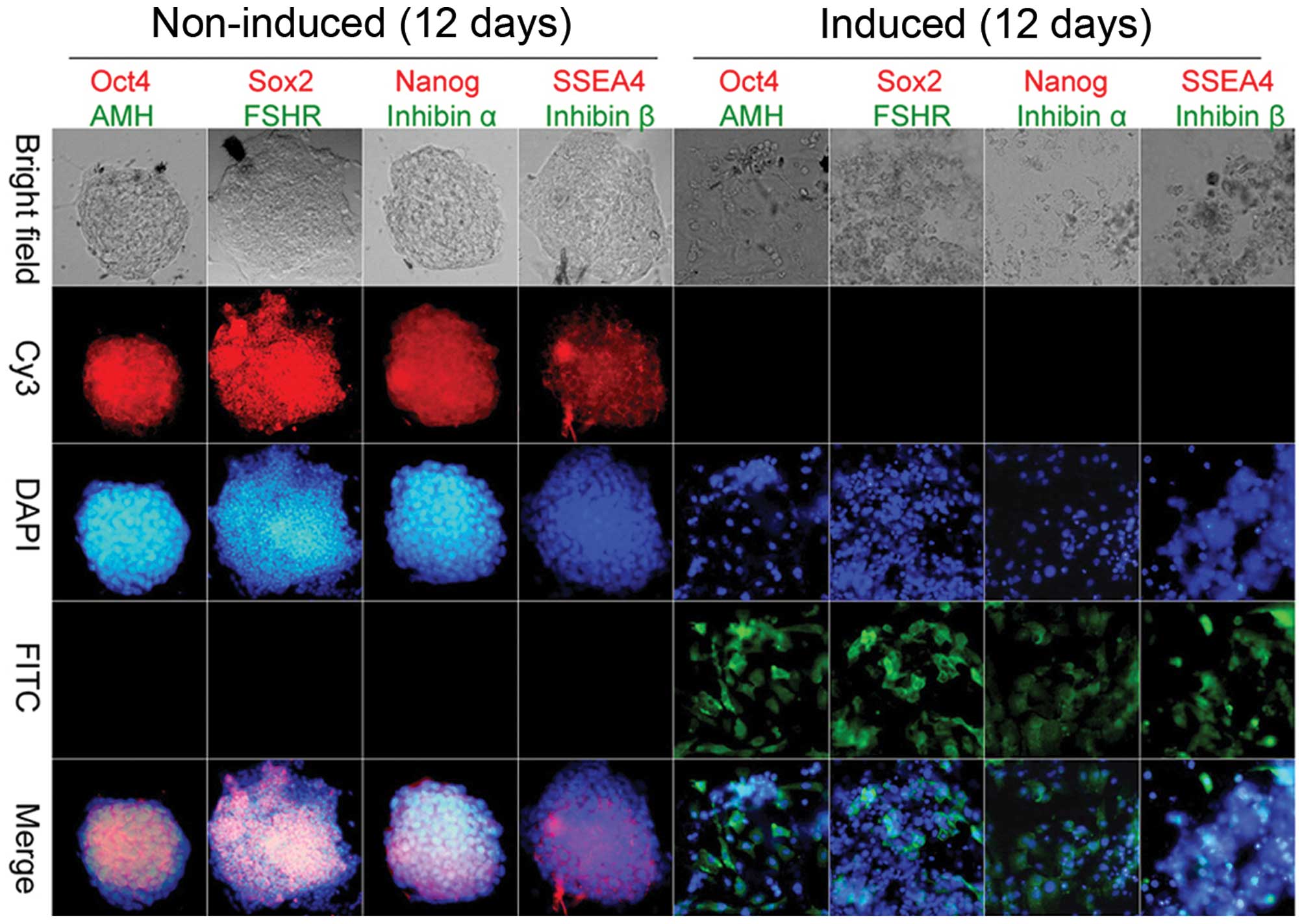Transplantation of ovarian granulosa‑like cells derived from human induced pluripotent stem cells for the treatment of murine premature ovarian failure
- Authors:
- Published online on: April 26, 2016 https://doi.org/10.3892/mmr.2016.5191
- Pages: 5053-5058
-
Copyright: © Liu et al. This is an open access article distributed under the terms of Creative Commons Attribution License.
Metrics: Total
Views: 0 (Spandidos Publications: | PMC Statistics: )
Total PDF Downloads: 0 (Spandidos Publications: | PMC Statistics: )
Abstract
Premature ovarian failure (POF) is a common cause of female infertility, for which there are currently no ideal treatments or medications. Furthermore, apoptosis of ovarian granulosa cells (OGCs) is an important mechanism underlying the decline in ovarian reserve and function. In the present study, several cellular growth factors and hormones were used to induce the differentiation of human induced pluripotent stem cells (iPSCs) into ovarian granulosa‑like cells (OGLCs) in vitro. Immunohistochemical staining demonstrated that OGLCs derived from iPSCs strongly expressed granulosa cell markers, including anti‑Müllerian hormone, inhibin α, inhibin β and follicle‑stimulating hormone receptor, but did not express stem cell markers, including octamer‑binding transcription factor 4, SRY (sex determining region Y)-box 2, Nanog and stage-specific embryonic antigen-4 12 days post‑induction. In addition, a mouse model of POF was generated by cyclophosphamide treatment. Subsequently, iPSC‑derived OGLCs were transplanted into the POF mice (OGLCs‑iPSCs‑POF group) in vivo. Results indicated that, compared with the control group (POF mice treated with phosphate‑buffered saline), the growth state of OGLCs was markedly improved, and mature follicles could be detected in the ovarian tissue of the OGLCs‑iPSCs‑POF group. Immunohistochemical staining demonstrated that iPSC‑derived OGLCs transplanted into POF mice not only exhibited substantial growth in murine ovarian tissues, but also strongly expressed OGC markers. Furthermore, enzyme‑linked immunosorbent assays indicated that the levels of the hormone estradiol in peripheral blood samples were significantly enhanced following transplantation of iPSC‑derived OGLCs into POF mice. Furthermore, ovarian tissue weight was significantly higher in the OGLCs‑iPSCs‑POF group compared with in the control group, and the number of atretic follicles in OGLCs‑iPSCs‑POF mice was significantly reduced, as compared with in the control mice. These results suggest that OGLCs derived from human iPSCs may not only effectively enhance OGC growth and repair damaged ovarian tissue, but may also maintain the ovarian tissue niche, promoting follicular development and maturation in a mouse model of POF.












